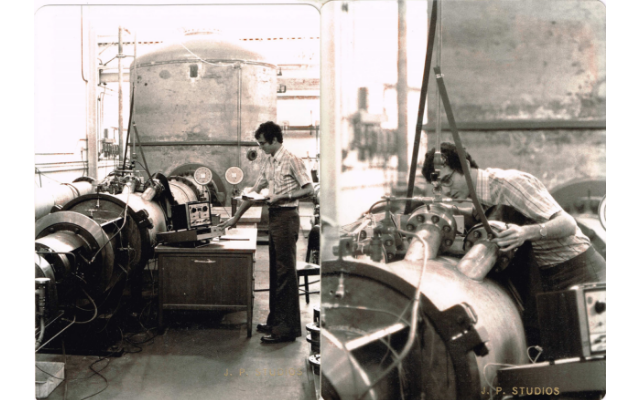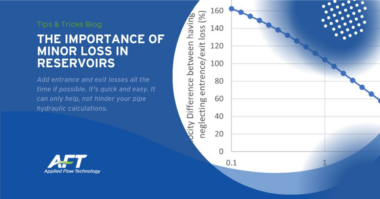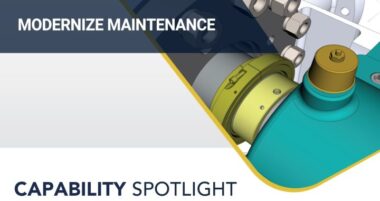Contributor: Randal Ferman, PE, Principal EKWESTREL Engineering Consulting
In pump literature, much has been written and continues to be written about NPSH (Net Positive Suction Head) and cavitation. As career pump engineer, I will share some of my knowledge and experience on pump NPSH testing, particularly a few practical matters that may not be covered in the extensive literature on this subject.
Terminology designed to confuse
The subject of NPSH can be confusing if one does not understand that there are fundamentally two parts to NPSH. There is the pumping or test system which provides the pump suction condition called “NPSH Available,” often abbreviated as “NPSHA” or “NPSHa” and in context it may be called simply “NPSH.” Then there is the value of pump suction performance known as “NPSH Required,” abbreviated “NPSHR” or “NPSHr.” But, again, in context the abbreviation “NPSH” is used. It is this dual usage of “NPSH” that can create misunderstandings and confusion.
When should the purchaser specify an NPSH test?
There are no hard and fast rules on this. Much depends on how much margin there is and what are the consequences of coming up short on NPSHR pump performance. I suggest that NPSHR testing for many common applications is not necessary.
If the margin ratio of NPSHA/NPSHR is 1.1 or greater for all foreseeable conditions of service, then an NPSHR test may not be necessary. For pumping applications involving suction vacuum conditions of more than 10 inches (250 mm) of mercury, or lift conditions measuring more than, say 10 feet (3 m), NPSHR testing is appropriate. Other engineers may suggest different values. These given here are just arbitrarily chosen values for perspective.
There can be justifiable reason to perform an NPSH test for any given application especially when volatile liquids, elevated temperature and pressure, and highly consequential service conditions such as electric power generation are involved.
When the pump manufacturer proposes an engineered-to-order pump with an inlet stage impeller design that is not geometrically homologous – in other words not precisely scaled – from a reference design, then an NPSHR test would be advised.
How accurate and reliable is model testing?
Model testing is most often performed using accurately calibrated measurement equipment with a test rig designed to achieve accurate and reliable test conditions. Results are probably more accurate than can normally be obtained from a production full-scale shop test, provided the following:
- The impeller inlet velocity conditions are not far different than those of the full-scale design, especially if the full-scale NPSHA is at an extremely low pressure.
- The geometry approaching the impeller and the impeller inlet geometry itself are modeled faithfully.
- The model testing arrangement permits precise flow and pressure adjustments and good pressure tap and measurement practices are followed.
Can an NPSH test be performed on an open pit vertical pump?
The short answer is “no.”
There is sometimes the option of doing a “submergence test.” There may be physical limitations with the manufacturer’s test facility that make it difficult to perform such a test. The submergence test is done to check the pump performance at the minimum design submergence level. It is possible, but not necessarily the case, that the maximum flow condition tested will also confirm the pump’s NPSHR, at that condition only.
For a large municipal vertical pump, I was involved in a test where the end user wanted to see the pump perform at different levels of submergence. That meant drawing down the Olympic pool-sized test pit and wasting away thousands of gallons of water out to the storm drains. This was in Los Angeles before it really sank in that long term changes in the climate were to have serious affects on our water supplies. The end user wanted us to draw down the water to the point where the pump quit pumping. We drew down below the pump’s design minimum submergence while the discharge was splashing against the empty pit floor and spraying all over the place. Test had to shut down not because of cavitation, but due to the electrical dangers with water everywhere.
When it is necessary to have an NPSHR test of an open pit vertical pump, there are two commonly used options. One is to rely upon a scale model test – this is common, particularly on larger size pumps. The other is to separately test the first stage bowl assembly using an enclosed tank where the cover air pressure can be regulated to adjust the NPSHA.
Closed loop NPSH testing
If the closed test circuit has a retention tank (also referred to as a “suppression tank”) designed for varying the suction pressure – tanks are not always designed for vacuum – then a pump NPSHR test is a straightforward proposition. High energy pump testing often does not have a retention tank in the circuit for varying suction pressure. In these instances, the pump inlet suction pressure can be regulated with a valve. This is not ideal as it is difficult to control the test and cavitation and deaeration at the control valve can travel into the pump inlet. Not ideal, but it is often done, nevertheless.
Vacuum leaks
During NPSH testing, when the suction pressure is dropped below ambient air pressure – vacuum conditions – air will want to leak into the pump suction line through flange gaskets, valve packings and mechanical or packed seals. The result will be apparent cavitation occurring at higher levels of NPSHA, resulting in falsely higher levels of NPSHR on test.
I was tasked with troubleshooting a pump NPSH test that just wasn’t quite achieving the specified NPSHR level. As usual, I inspected the test rig, combed through the test data and asked a lot of questions. We eventually traced down the problem to a packing leak on an ancillary valve connected to the suction piping. But most of the time experienced test personnel will know to prevent leakages before the testing commences.
Control of test
Pump NPSHR testing is inherently challenging due the need to adjust the suction pressure while maintaining a constant rate of flow, during de-stabilizing pump cavitation conditions. As the level of cavitation increases and the cavitation breakoff point is approached, pumping conditions tend to become critically unstable. Slight changes in suction pressure or the rate of flow can dramatically affect system stability and even result in a complete loss of suction prime.
Early in my career I was tasked with testing a large vertical pump inducer. When the suction pressure reached extremely low levels – which is what inducers are designed for – the entire system shook violently. Suddenly everything went quiet. A shop manager standing nearby knew instinctively to hit the kill switch. We disassembled the rig and pulled out the pieces of busted-off inducer blades. This was one of my early and exciting introductions to NPSH testing.
Should an NPSH test be witnessed?
Yes.
Apart from the fact that the presentation of NPSHR test results is an interpretive evaluation of a series of test data points, the end user’s representative may want to listen for and record noise. It’s always a good thing to get up close and use a stick or rod to conduct the noise from the pump casing to the side of ones head, not unlike the doctor’s use of a stethoscope. The pump will almost always have audible cavitation noise at most, if not all operating conditions. This is normal. But a sharp crackling noise or the sound of pumping gravel, either continuous or intermittent, may mean excessively damaging cavitation is occurring and this should be questioned. High head double suction pumps or the first stage of a high head, high energy pump can exhibit cavitation noise at design conditions. Preferably, in advance of placing an order for the pump, the manufacturer should be asked to justify their pump selection based on other similar pumps operating successfully for years without cavitation erosion failure.
For an independent evaluation of the pumping equipment for your system, contact an experienced consulting engineer who can help with your specific application.






Great article, and well written. Good information about vertical pump NPSHr testing.
Dear Randy, good article. As an interesting exception to what you have exposed, I have to mention that I visited a test facility in Germany many years ago in which they had a removable lid that could be placed on top of the test sump and sealed around the pump column so that the pressure in the area between the water surface and the lid could be controlled by means of a vacuum pump. This way, a true NPSHr test for a vertical wet pit could be conducted. Unfortunately, I believe that test facility is no longer operational.